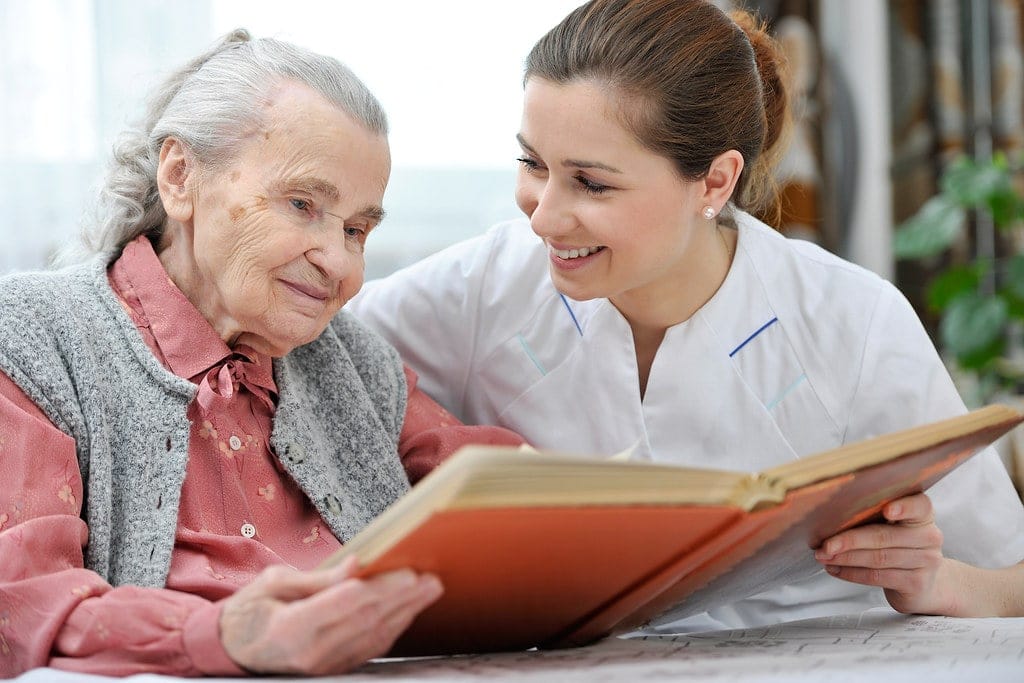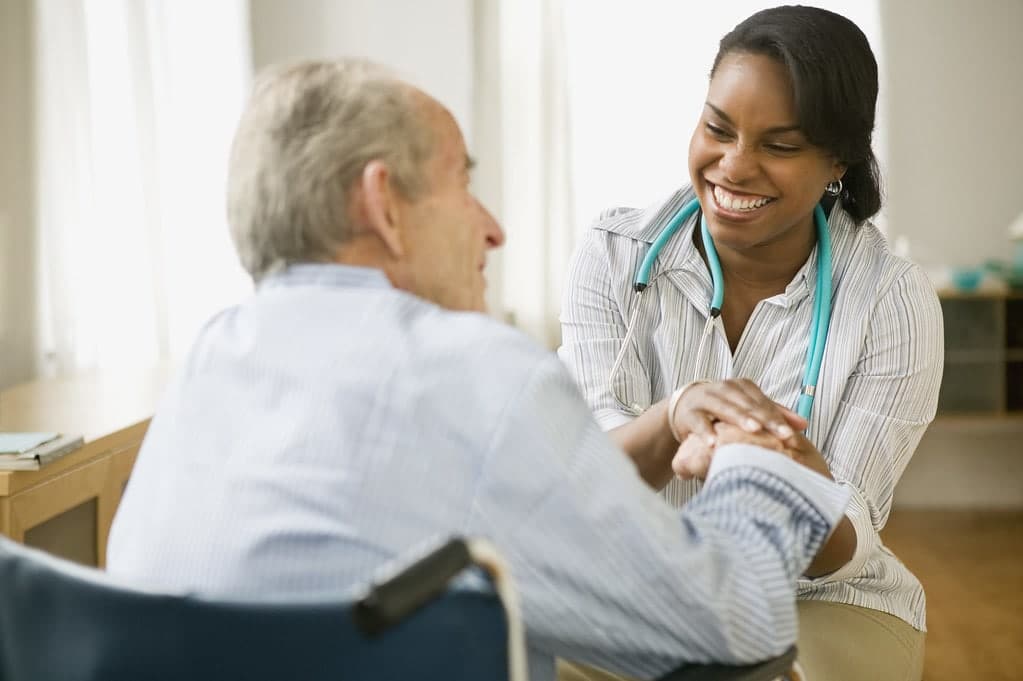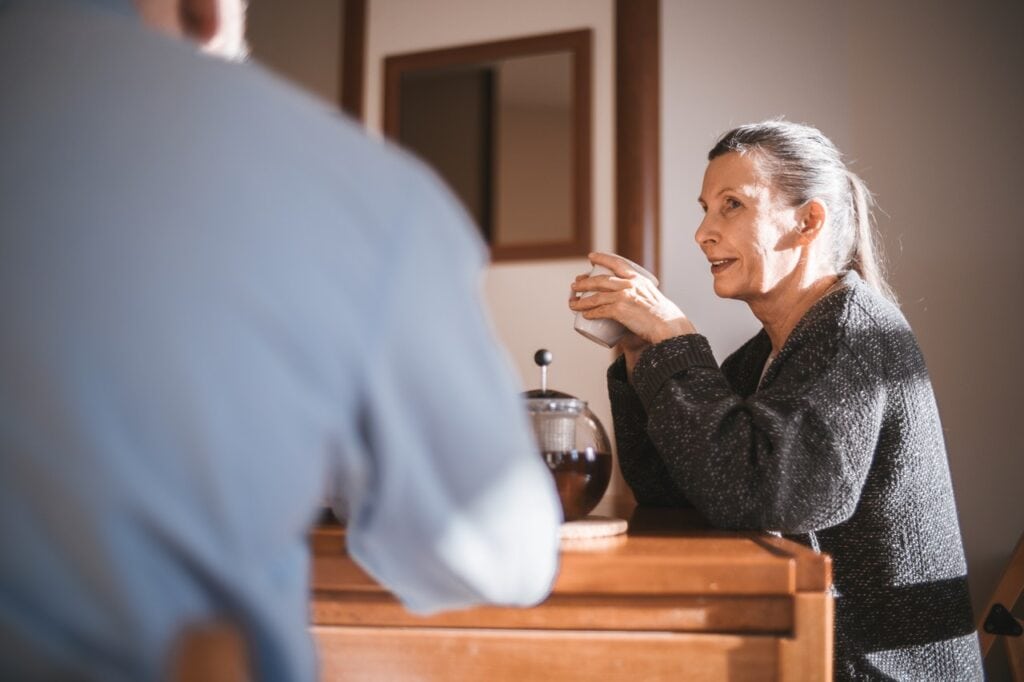Table of Contents
On a broader scale, elderly care encompasses services such as adult day care, assisted living, nursing homes, long term care, elderly care in home, and so forth. Elderly care emphasizes the personal and social requirements of seniors who need assistance with health care and various daily activities while aging with dignity.
The presence of aging societies is not just a challenge for policymakers, governments, and healthcare providers alone. Everyone who has or will have an elderly loved one is affected. To remain in good health involves much more than just providing them with medication and as needed treatment.
Many of you might be blown away to learn that currently the US population consists of 46 million people age 65 or older. According to RHI hub, by 2030, the number rises to 1 in 5 American's over the age of 65.
Another interesting factor is that home care aides held close to 2.1 million jobs during 2012. The U.S Bureau of Labor Statistics reported that more than half of them were rendering services to patients in their homes. The total number of aides are said to grow to more than 3 million by 2022.
Adult children may not fully grasp the extent to which their elderly parents' aging will affect them. In most cases, people do not even view their parents as seniors but think of them as strong, healthy individuals that have everything under control. After all, they might be aging, but when they live independently and seem to be in good health, why should there be any concerns?
However, the time does come when the effects of aging become more apparent and you may begin to realize that they need some assistance. Your parents' well-being becomes a concern, and you only want what is best for them so they may live their last years comfortably.
The overall decline in mental and physical vitality often results in drastic changes to parents' appearance and quality of life. As children of aging loved ones become aware of the effects of aging, it will improve outcomes with realistic expectations of the future.
Let's contemplate a few essentials regarding elderly care for parents.

The well-being of elderly loved ones is our ultimate wish for them. So they have the joy and comfort in knowing they can live out the last few years of their lives with confidence. Elderly care entails thinking about their physical, mental, and emotional health.
Some individualized planning, which involves modifying or obtaining extra in-home care assistance, will help ensure the quality of life the aged deserve. Ensuring your loved ones are healthy, safe, and happy is of prime importance. This is the key to them aging well at home.
Next, be sure daily living requirements are taken care of. These are referred to as ADLs (Activities of Daily Living). For more information check out Activities of Daily Living Explained. But basically the ADL activities are as follows:
An inability to complete any of the ADLs may be due to health issues or impaired mobility. Working with a licensed physical or occupation therapist can often improve one's independence. They can also recommend equipment or assistive devices to improve independence. If this is not sufficient, bringing in a caregiver would be the next best option.
Initially, our elderly loved ones will likely be able to complete the ADLs. There are still higher level tasks which require complex planning and thinking. These are called the instrumental activities of daily living or IADLs. Assisting with these activities as needed will increase their independence allowing your loved ones to age in place. Check this out for a breakdown of IADL's vs. ADLS. The IADLs are listed below:
You may soon discover a need for elderly care in home services as your loved one struggles to carry out certain tasks at home independently. If this is the case, you need to arrange for a family member, relative or friend to help out with caring for the aging at home until the family has decided on the next steps.
Taking a birds eye view of the situation will be helpful. Consider the following:
Among the first things to assess is an elderly parent's accommodations or living arrangement.

Part of ensuring an elderly parent's well-being is assessing their current living arrangement. Do they live nearby, and are they living on their own? Do they prefer staying on their own, or would they be open to moving into a suitable living arrangement where they can be supported?
These are all very important things to think about and discuss with them. Below are different types of living arrangements available from continued care retirement communities to aging in place. Each has varying degrees of assistance provided and varying costs.
Seniors who require assistance with health support and ADLs may have no better alternative but to live with family members. Many homes have "mother-in-law suites" or a private area within the home or on the same property.
An elderly person who needs medical surveillance as well as professional caregiving, may require a transition to a nursing home. There are nursing staff on duty 24/7 with access to a doctor as needed.
These facilities are ideal for elderly care for parents who may require a little assistance with their ADLs like bathing, dressing, meals, transportation, exercise programs, laundry, and medication administration. Most residents in this setting manage most of their day to day activities with occasional help and appreciate the community of similar residents.
When possible, most seniors opt for elderly care in home. Often, only a few minor adjustments or modifications are needed for safety and to allow support from professional caregivers or a family caregiver. The duties of a caregiver in home can vary greatly depending on the persons needs and abilities.
The elderly who rent apartments or purchase homes within a community setting share various amenities with other seniors such as laundry service, social activities, clubhouse, gyms, transportation, and group meals.

Elderly people need to enjoy aging in their home. Finding pain points during activities of daily living is an important way to help our loved ones. Identifying where modifications and adjustments would ensure an elderly parent may live comfortably can greatly improve quality of life. Below are some ideas to make aging in place as smooth as possible.
Ask the following questions when looking to accommodate your loved one's daily mobility needs:
If they are having difficulty with the tasks listed above, an evaluation by a licensed physical therapist or occupational therapist may be necessary. This would allow the skilled clinician to make recommendations for necessary durable medical equipment or DME. Examples of DME include: rollator, walker, cane, wheelchair or 3-1 bedside commode.
If a wheelchair is required or may be needed in the near future, older homes may require widening of door frames, especially to get into the restroom. If grip is a problem or becoming one, replacing door knobs with lever handles will allow for improved access.
Prevention of falls at home from tripping or slipping is critically important. There are also objects that may impair their mobility. Cords or wires crossing walkways as well as excessive furniture which makes walkways more narrow are significant hazards. Any rugs which are not low profile and secured to the ground should be removed. Be aware of the transitions between rooms as there is often a slight lip and change of surface that increases fall risk.
The daily routine surrounding hygienic practices are important to maintain health in the elderly. Various modifications can be made to support their hygiene needs. Some of these include:
Many toilets in older homes are way too low. This can be the case in newer homes as well. Depending on the age of the home and commode, some toilet seat heights are 14" or less. Standard toilet height is only 14.5". Tall toilets have a seat height of 16.5". This is an improvement, but may not be tall enough for an elderly person to maintain their independence. A raised toiled seat may be necessary.
Hand held shower heads accompanied by a shower chair or bench is a great way to reduced the energy cost of bathing and reduce risk of fall and injury as well. They are relatively inexpensive and can make a huge difference in the life of your loved one. For those having difficulty stepping over the side of the tub to get into a tub/shower combo, the tub transfer bench is designed to help. Sit on the bench from the outside, lift your legs over the side of the tub and scoot into position. Now you are ready to use that handheld shower head!
Various accessories are made available nowadays to assist with dressing and grooming activities like shaving and hair brushing. Reduced mobility in the hands or arms often stands in the way of carrying out these activities with ease. Accessories like an extra-long handled brush, long handled shoehorn, sock dressing aid, grabber tools, ergonomic nail clippers etc. will be very handy when needed.
The ability to continue carrying out tasks around the home is important to the elderly who wants to be independent and remain active. Increased energy costs associated with performing chores often stands in the way and leads to frustration. Fortunately, there are several innovative items to help seniors in performing home-related tasks daily.
For example, accessories such as a cordless 2-in-1 stick and handheld vacuum, a step stool, or even a step trash can. These items make daily activities easier for the elderly. More expensive equipment such as a front loader washing machine and laundry cart equipped with wheels reduces the strain associated with laundry duties.
Cooking activities for the elderly often become tedious as time passes by, but it depends on the person's overall strength and mobility. Various solutions may offer continued independence in the kitchen area.
Practical items that will reduce food preparation for cooking activities may include an electric food processor, slow cooker, and food slicer.
If the budget allows, remodeling in the kitchen towards universal design will make things easier for an elderly loved one. Examples include raised wall ovens, pull out pantry shelving, and side-by-side refrigerators.
Ultimately, we all have to face elderly care for parents at some point. This may or may not involve caregiving or rendering some practical assistance to ease their burden. While it can often feel like a thankless task, the knowledge that your loved one is as safe and independent as possible can make it worthwhile. Many of us had parents who cared for us for an extended period of time, and for those who did not, this presents an opportunity to pay it forward. The time has come for us as adult children to make sure our elderly loved one's needs are met where they feel happy, safe, and cared for.
Furthermore, we need to remember that providing elderly care in home or elsewhere for our parents should be viewed as a privilege to make their last few years enjoyable. By no means should it be something to bear alone. Involve your siblings and other family members, and professional caregivers, especially for elderly care in home.
Also, be aware of the fact that there is help out there in the form of nursing homes, elderly care accommodation and assisted living facilities. There are all kinds of options and choices available nowadays, to allow elderly parents to age well.
Try not to worry or stress too much about your loved one's welfare. Know that you are not alone, and the very fact that you care and show consideration for their comfort and happiness already means a lot to your elderly parents. Stay informed and do your best to use various supportive resources, and know that you are improving your small corner of the world.
That's all for today.
Take care, keep mom safe and have a great day!
Winn